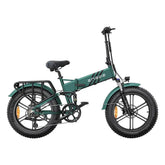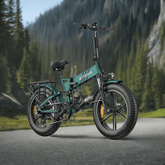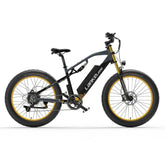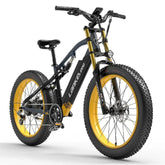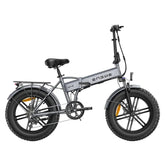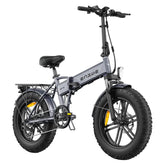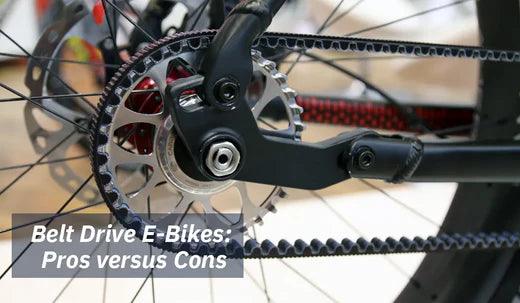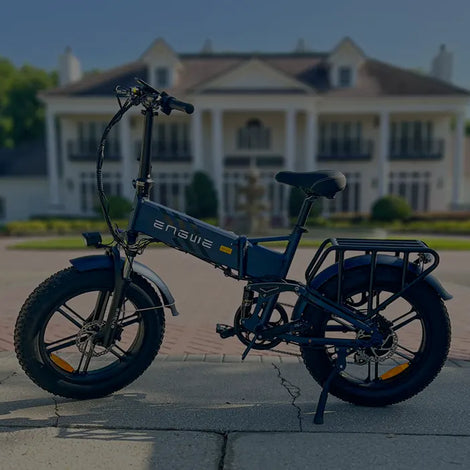The bicycle industry has recently shifted gears. It is increasingly outfitting a range of belt drive e-bikes with the cutting-edge belt-drive system as a modern alternative to the classic chains. You might ponder, 'What is a belt drive, and is it necessary for my cycling needs?'. This article will explore the advantages and drawbacks of belt driven bicycles, an innovation that's now more available at competitive prices.
Definition of Belt Drive E-Bikes
Belt drive e-bikes are electric bicycles featuring a belt drive system that replaces the traditional chain for power transmission from the motor to the wheels. Typically made from materials such as carbon fiber or polyurethane. The toothed belt provides riders with a smoother, quieter, and less maintenance-intensive riding experience compared to conventional chain-driven mechanisms.
This innovative design enhances the overall performance and usability of e-bikes, particularly in urban environments where noise reduction and low maintenance are valued.
In summary, the belt drive bicycle system is engineered from pliable carbon fiber strands, expertly designed to interlock with a cog's teeth. This state-of-the-art bicycle belt drive design is quickly gaining popularity for its exceptional durability and enhanced performance.
What is the mechanism behind a belt drive E-Bikes?
A belt bike operates under a concept akin to a chain, propelling the bike forward as the belt's contours engage with the cogs. To ensure peak performance and precise alignment, the bike belt drive is meticulously tensioned during installation. It may feature a guide to thwart lateral movements and derailment.
What are the advantages of using a belt drive E-Bikes?
Now, let's delve into the Advantages of Belt Drive systems when compared to traditional chain drives. Belt drives present a cleaner, low-maintenance alternative that's swiftly winning favor among cycling enthusiasts.
Minimal upkeep required
One of the standout Maintenance-Free benefits of a belt drive is its superior cleanliness relative to a chain drive. Free from the demands of frequent lubrication, a belt drive stays remarkably clean and is less susceptible to grime buildup. Simple cleaning practices, like a quick hose down, are adequate. With the no rust advantage of carbon fibers, even damp conditions can't induce corrosion.
Increased longevity for your vehicle's drivetrain
A prevailing belief among Long-Distance Cyclist aficionados is that a belt-driven bicycle offers superior durability, often outlasting a chain by a considerable margin. Chains may elongate and weaken as time passes, leading to the need for replacement. This can potentially cause extra wear on other bike components.
Less heavy than a chain
A belt drive mountain bike, known for its lightweight build, not only boasts a longer lifespan. It also outperforms traditional chains in terms of weight. This makes it a superior choice for enthusiasts seeking the efficiency and agility of belt driven mountain bikes.
Are you able to perceive the sound?
When navigating the rugged paths of mountain biking, the jarring sound of a chain-driven bike's clattering can be a distraction. Cyclists often turn to chainstay protectors to quiet the noise. This is a problem that's non-existent with the tranquil ride of a no-chain bike.
The silence of a belt drive is unmatched, thanks to its single-piece construction that sidesteps the metal-on-metal contact found in chain vs belt drive systems. This design ensures a peaceful ride, free from the abrasive sound of grit against metal that often plagues chain drives.
The development of bicycle design
The bike industry's evolution has sped up with the move away from chains' complex components, signaling a pivotal shift in over a century. With the industry's pivot to Internal Gearing systems, like internal gear hubs and gearboxes that enhance e-bike motors, designers are unlocking new design potentials. These innovations empower designers to refine a bike's frame for peak geometry and performance, sparking a surge of creativity in bike design.
Innovations such as the Pinion system are empowering designers to refine a bike's frame for peak geometry and performance. This sparks a surge of creativity in bike design.
The frame divider plays a vital role in the bike's design, creating an essential opening that allows the integration of a belt drive into the rear triangle. This feature not only boosts the Frame's functionality but also elevates its visual appeal.
What are the drawbacks of Belt Drive E-Bikes?
Home mechanics may encounter some challenges when it comes to servicing their vehicles.
Mastering a chain tool and locating spare parts might be within reach for many. However, fitting a belt drive typically requires professional expertise from a bike shop, especially for maintenance or initial setup.
Belts generally don't need to be split, yet advancements like Veer's split-belt technology are redefining this. For maintenance or swapping Replacement Belts, a belt drive bike's frame often features a removable section within the rear triangle, demanding precise disassembly and reassembly.
Generally, they will be seen on more expensive bicycles (although this is evolving).
Traditionally, people viewed belt drive e-bikes as a premium feature exclusive to more exotic and higher-priced models like electric bikes. Manufacturers faced higher costs when opting for a belt drive instead of a traditional chain. This was due to the chain's widespread availability and the extensive range of suppliers.
The cycling landscape now includes belt drive e-bikes, even in entry-level models, reflecting a recent pivot towards this advanced mechanism. The Engwe P275 Pro stands out as an impressive electric touring bike, featuring the Bafang 3-Speed Gear, a notable enhancement for its class. At its price point of €1,899 price tag, the P275 Pro not only offers a belt drive system but also aligns with the cycling industry's trend towards innovative E-Bike Motors, such as the Bafang Torque Sensor Mid-drive Motor. This 250W motor, delivering a robust 65Nm of torque, harmonizes with the rider's input to ensure a smooth and effortless experience on electric city bikes. The rising demand for belt drive e-bikes prompts competitive pricing and wider adoption among various bike brands.
Is it possible to install a belt drive on any type of bicycle?
The question of the disadvantages of belt drive is subjective. One might question if the expense and effort to retrofit a belt drive onto a bicycle justify the outcome. Especially when the cost could be on par with purchasing a new belt-driven e-bike.
If your bicycle currently features derailleurs, transitioning to a belt drive system would require the installation of compatible gear hubs to maintain the bike's gearing. This change might also call for additional bike accessories to achieve a smooth integration.
Which types of bicycles rely on belts for support?
The current market offers a wide variety of styles, ranging from sturdy city bikes designed for the demands of cargo bike fleets. Additionally, there are high-performance mountain bikes equipped with advanced gearbox gear systems. This diversity makes them ideal for commuting bikes.
Commuter bikes, especially those featuring a bike with belt drive system, are gaining popularity for their minimal maintenance needs. These belt drive e-bikes offer a significant advantage for daily commuters. They provide a clean, grease-free ride that's perfect for arriving at work without the dreaded greasy pants scenario.
This ensures you're meeting-ready.
For the Long-Distance Cyclist, the robustness of Touring Bikes makes them an indispensable choice for withstanding varied terrains and weather conditions. Opting for a Touring Bike can be a game-changer for long-distance adventures. These bikes outlast traditional chains, which often succumb to quicker wear in harsh environments like coastal regions with corrosive saltwater.

